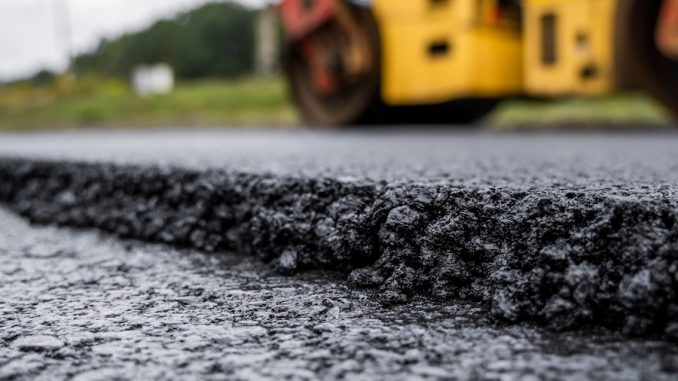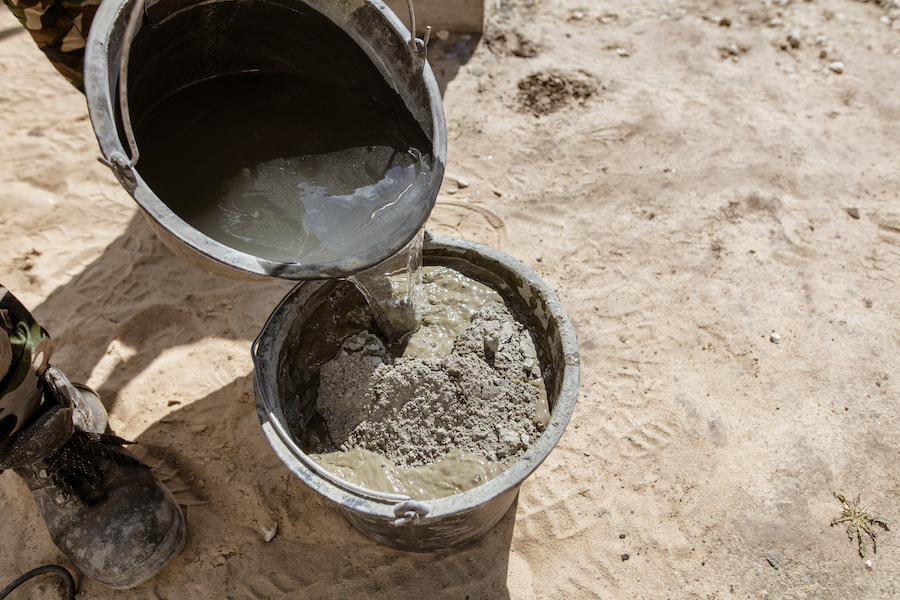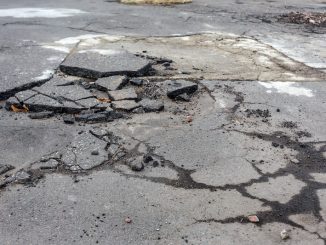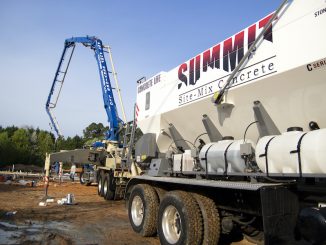
View the complete article here
Concrete and asphalt are both used for pavement. Pavement is used for roads, driveways, patios, recreational facilities, and more. Whether you choose asphalt or concrete is based on many considerations, including the size of the area to be paved, how the pavement will be used, cost, and aesthetics. In this article we will discuss the differences between concrete and asphalt, how they are used, and the pros and cons of each.
Hot Mix Asphalt (HMA)
Hot Mix Asphalt (HMA) – is a combination of rocks, sand, and other materials mixed together with a binder material. Reclaimed asphalt paving (RAP) is often used in the mix. The binder, called asphalt cement, is typically the black, sticky byproduct of crude oil distillation.
How HMA is Made
Hot mix asphalt is made in an HMA plant. There are different recipes or mixes depending on how the final HMA product is used. In addition to aggregate, other materials such as minerals and additives may be used. The amount of RAP used in a recipe varies and is handled separately within the mixing process.
Asphalt Applications
Asphalt is used for highways, basketball courts, playgrounds, walkways, driveways, and more. A fluid-like form is used to waterproof surfaces. It is also used to make shingles for residential roofing. With proper installation and maintenance, an asphalt surface can last 20-30 years.
Pros of Asphalt
There are several benefits to using asphalt pavement, including:
Flexibility
It is more flexible than concrete – it actually shrinks and expands with the changing temperature. This makes it a better choice in areas where there is extreme weather, such as the Midwest United States where the summers are hot and humid, and the winters are long and often harsh with below freezing temperatures. Cement is more likely to crack in these conditions.
Lower Cost
Asphalt generally costs less to manufacture, install, and maintain compared to concrete. Some homeowners are able to maintain and perform basic repairs on their asphalt driveways.
Aesthetics
There is something beautiful about shiny new asphalt pavement. It also offers drivers a smoother ride compared to concrete.
Recycled
Old asphalt pavement almost never dies. Nearly all asphalt pavement is recycled to make new asphalt pavement.

Cons of Asphalt
Beauty and low-cost aside, there are cons to using asphalt, including:
Extreme Temperatures
Although it’s true that asphalt is flexible in areas with harsh weather, there is a limit. Extreme cold can cause cracks and chips. Extreme heat can cause surface damage such as pitting.
High Maintenance
Asphalt requires preventative and regular maintenance. You will need to seal your asphalt pavement regularly. You must keep an eye out for small cracks and repair them before they get much bigger.
Concrete
Concrete is used in much of the construction you see in the United States. Even homes made of wood and brick are typically built on concrete foundations. It is poured wet into a concrete form and left to dry – or cure. It can be formed into nearly any shape.
How Concrete is Made
Concrete is sometimes called cement. But cement is a component of concrete. Concrete is comprised of Portland cement, water, and aggregates (typically rocks and sand). The Portland cement mixed with water binds with the aggregate to form wet concrete.
Concrete Applications
Concrete is often used for concrete foundations, but entire structures – like office buildings – can be made from concrete. Rebar is typically used to give it strength and durability. Unlike asphalt, concrete is used to create items such as planters and statues. Concrete can be stained or stamped – making it a beautiful addition to landscaping – such as a concrete patio or garden path. Concrete is also used for floors and kitchen countertops.

Pros of Concrete
There are many good reasons to select concrete as a paving material, including:
Strength
Concrete can handle heavy loads. It is the perfect choice for sidewalks, parking lots, and driveways with heavy traffic. You can leave a huge truck parked on it for extended periods – it can handle it. Rebar can be added to the concrete form to make the pavement stronger after it cures.
Durable
Concrete that is installed and maintained properly can last two to three decades longer than asphalt – up to 50 years.
Aesthetics
The options for beautifying your concrete are nearly unlimited. You can stamp or roll it with patterns. You can paint or stain it. You can polish concrete to give it a glass-like appearance. You can embed small stones or pieces of glass to give concrete floors and countertops a unique look.
Low Maintenance
If a concrete pavement is installed properly, it should require very little maintenance.
Cons of Concrete
There are some cons to using concrete for pavement, including:
Cost
Concrete costs more than asphalt. How much more depends on where and how it’s being used. But asphalt driveways and recreational areas are nearly always the more budget-friendly choice.
Stains
Oil stains and dirt marks are going to show on concrete. That’s why you want to make sure to clean up grease spots as soon as you see them. One option, often used in residential garages, is epoxy. You can sprinkle decorative flakes in the epoxy to make it look nice – and help hide dirt.
Expensive to Repair
Concrete isn’t just more costly to install – it’s also expensive to repair.
Conclusion
Both concrete and asphalt have an amazing array of uses. However, you can do more with concrete, including buildings, countertops, retaining walls, and statues. Concrete can be stamped, stained, and polished to create beautiful surfaces. But asphalt is a lower-cost alternative that can handle harsher weather and provide a smoother surface for drivers. Whichever you choose, proper installation and maintenance will extend the life of your asphalt and concrete surfaces.
View the complete article here
What are the pros and cons of using asphalt for pavement?
Asphalt offers flexibility, lower cost, and aesthetic appeal; however, it may face challenges in extreme temperatures and requires regular maintenance.
What are the advantages and disadvantages of using concrete for pavement?
Concrete provides strength, durability, and various aesthetic options; however, it comes at a higher cost, is prone to stains, and involves more expensive repairs compared to asphalt.












































